目次
Craft Report
Kagawa Lacquerware: A Traditional Craft from Edo, Created by Masters.
In Takamatsu City, Kagawa Prefecture, the Nakata Shikki workshop produces lacquerware with vibrant colors using traditional techniques passed down in this region. Not only do they apply the lacquer, but they also make the wooden base in-house, creating approachable products crafted together as a family.
Kagawa lacquerware began in the Edo period, promoted by the Matsudaira lords of Takamatsu. Loved in a wide range of uses—from low tables and trays to plates and display shelves—it has been carried on through generations. The five traditional techniques devised by masters such as Zōkoku Tamakaji and Taihei Gotō—Kinma, Zonsei, Chōshitsu, Gotō-nuri, and Zōkoku-nuri—are designated as nationally recognized traditional crafts. Even a single pair of chopsticks takes over a week of repeated painting and drying, resulting in richly colored, durable lacquerware of true value.

Mastering Both Woodworking and Lacquer—A Dual Tradition.
Yohei Nakata was born into a lacquerware family workshop that has continued for over 80 years, beginning with his grandfather. Growing up, he watched his father Mitsuru skillfully shape large pieces of lumber and apply lacquer. After joining the family business, Yohei also studied at the Kagawa Lacquerware Institute, where he honed his skills in traditional techniques. Today, in addition to producing work for exhibitions, he is engaged in efforts to promote Kagawa lacquerware more broadly.
Kagawa once boasted one of Japan’s highest production volumes of lacquerware, including low tables. Nakata Shikki, too, once focused mainly on subcontracted work—lacquering carved wooden bases with Gotō-nuri or Zōkoku-nuri techniques. But in the 1990s, as the economy declined, orders gradually decreased.
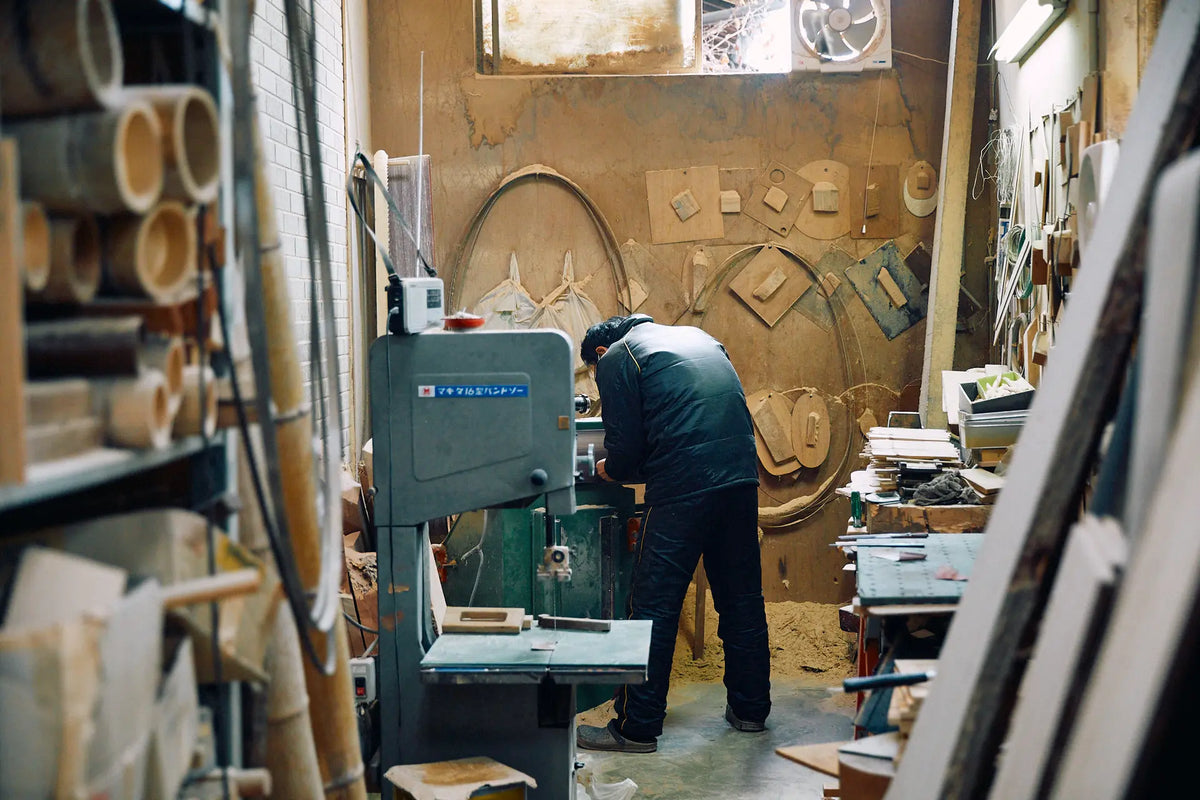
To overcome this, Mitsuru, skilled in woodworking, began creating new works to present at craft exhibitions, aiming for awards. Thanks to such efforts, for about ten years the workshop produced mainly large pieces like furniture. Their distinctive style—processing wood in-house and lacquering it—was like wielding two crafts at once.
Behind the workshop lies a wood-processing space filled with wide slabs of cypress, long bamboo poles, and large woodworking machines—something unusual for a lacquerware workshop. This facility for handling raw wood is one of Nakata Shikki’s defining features.
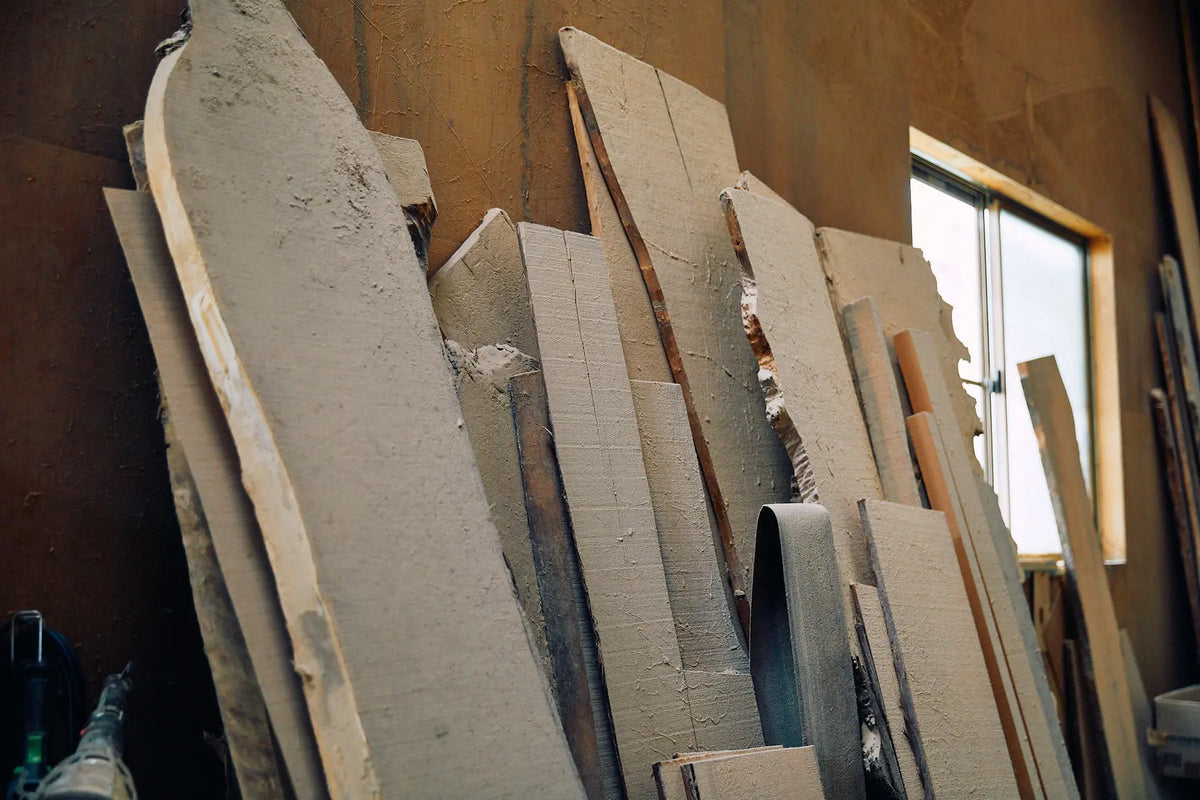
Today, Yohei also handles the entire process from woodworking to lacquering. Some woods are straightforward, while others—though beautiful—are uncooperative. He works as if listening to the “voice” of the wood, facing each material daily. This rare, integrated approach often leads to new ideas.
“My father has always thought about what kind of work would fit the needs of the times,” Yohei explains. Having his father both as a mentor and a collaborator provides a unique family-business dynamic that nurtures new product ideas.
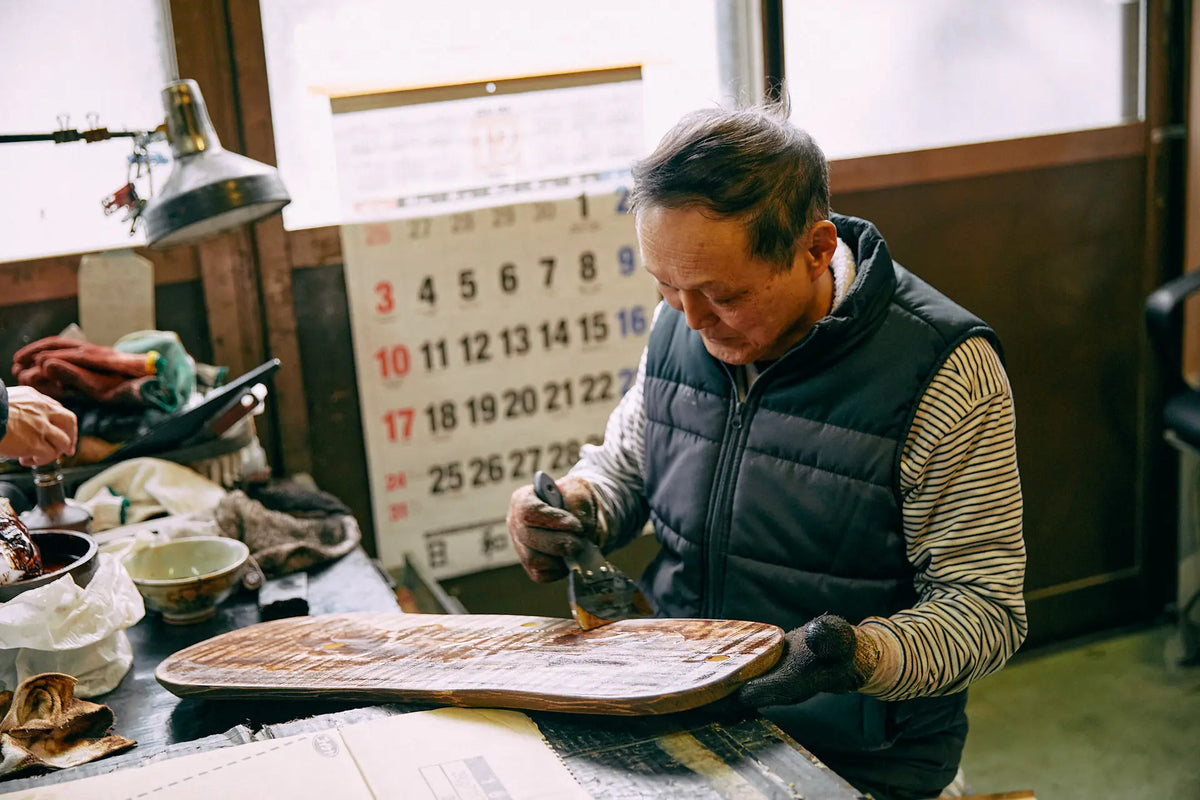
A Unique Tie with Aji Stone, Japan’s Premier Granite.
Nakata Shikki has also taken an unusual approach with products featuring ishiji-nuri (stone-textured lacquer). This technique uses powdered stone on the surface, and in Kagawa’s Aji district, the renowned Aji Stone—called the “diamond of granite” and one of Japan’s three most famous granites—is quarried. Known for its fine, beautiful surface and durability, it has long been used for tombstones and lanterns.
Powdered from offcuts and scrap from stone workshops, Aji Stone is sprinkled onto lacquered plates before drying, transforming wooden plates into objects with a matte, stone-like texture. While other lacquerware regions produce stone-textured pieces, the fact that lacquerware and Aji Stone—both longstanding local industries—come together in Kagawa makes this collaboration especially meaningful.
Yohei explains: “I want people to know the value of what we have here locally. By making such pieces, I show that even lacquer artisans can create something that sparks conversation.” These works embody the weight of tradition carried by both lacquerware and Aji Stone.
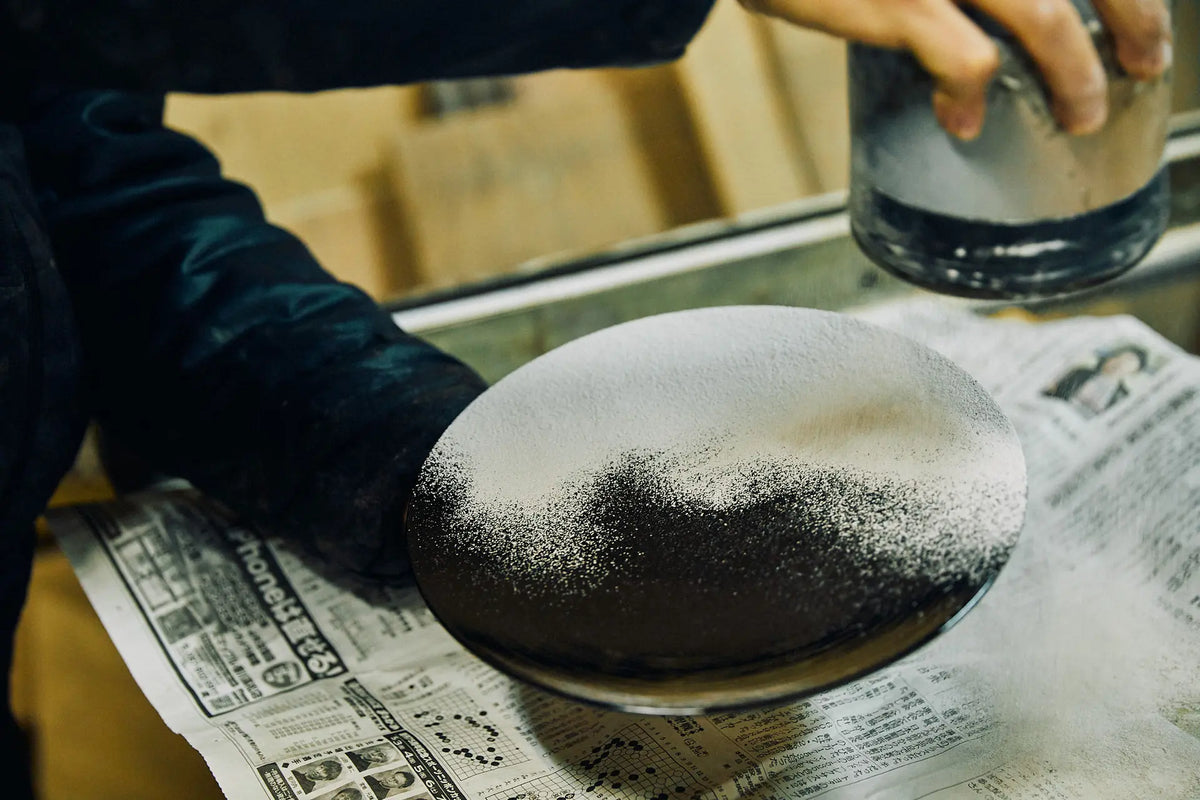
Preserving Tradition While Making Everyday Use Easier.
Nakata Shikki’s works convey the true charm of lacquerware. The silky texture achieved through many careful coats, the vivid yet calm colors, and the timeless, familiar designs make them ideal for daily use. Plates and chopsticks fit snugly in the hand, a result of Yohei’s deep knowledge of wood materials and dedication to the user’s experience.
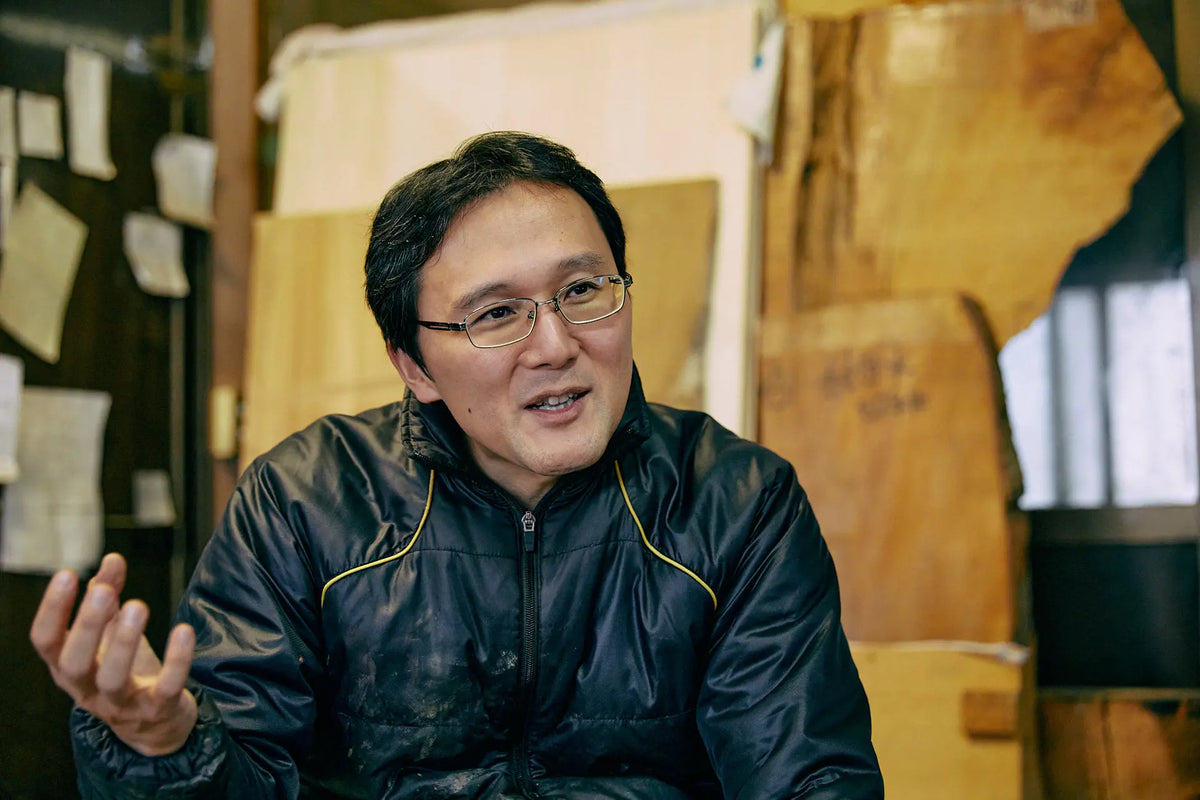
“As long as I build on the strengths of the past while making things easier to use, I can create what people truly need,” Yohei says. “Simply making something new is easy—but what matters is preserving the essence of tradition while making it more approachable.”
Though lacquerware is often seen as glossy and luxurious, Nakata Shikki believes its real value lies in daily use. For those unfamiliar with lacquerware, starting with simple, warm pieces like Nakada’s plates or bamboo chopsticks may be the perfect way to begin a long-lasting life with lacquerware.
Interview and photography: Daiki Morishita

 商品を見る
商品を見る
 商品開発を依頼
商品開発を依頼 商品を見る
商品を見る
